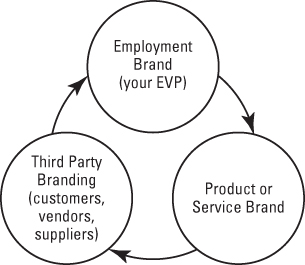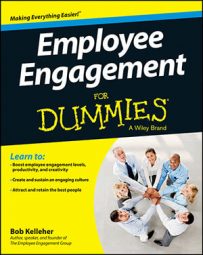Clearly, decisions made from the heart aren’t entirely rational or logical. So, what does this have to do with employee engagement and employment branding? Simply put, branding is a lot about capturing someone’s heart.
Consider Apple. Although Apple’s star shines brightly today, it wasn’t so long ago that Apple was on the brink of collapse as PCs were killing Macs in the marketplace. But Mac users had such a strong emotional tie to the Apple brand that they essentially kept the brand alive until Steve Jobs could launch iTunes, the iPod, the iPhone, and the iPad. Apple truly succeeded when its products captured both the hearts and the heads of consumers.
Employee engagement occurs when an organization is able to capture its employees’ heads and their hearts. And how do they do this? By branding their EVP and effectively linking the firm’s purpose, vision, values, and strategy to the firm’s brand. This emotional connection is why an employee becomes a brand advocate for his or her employer.
In recent years, our society has become very brand conscious, thanks in part to the proliferation of social media on such sites as Facebook, Twitter, and LinkedIn. Indeed, social media is an extremely effective tool for driving brand engagement internally, externally, and via your external stakeholders.
This is at the foundation of what is called tri-branding. With tri-branding, companies link their product or service and employment brands, and then leverage employees, customers, and other key stakeholders to sing their praises (often via social media) or “live” their brand.

Take a favorite case study, Apple. As mentioned, Apple excels at linking its product brand with its employment brand, and hiring the most creative people to make the most creative products. But that’s not all.
Apple also excels at getting employees, stakeholders, and particularly customers to sing its praises and live its brand. It’s consistently amazing how many people swear by their iPhones, and take particular delight when some feature on their phone trumps the same feature on another device. These people actually live the Apple brand. They’re both logically and emotionally attached to Apple.
Still don’t understand? Try asking your teenager if working at Burger King is cool. Odds are, she’ll say no. Then ask if it’s cool to work at Starbucks; I’m guessing you’ll get a different answer. Not to pick on the Burger Kings of the world, but why is Starbucks considered “cool” when other fast-food places, which pay similar hourly rates, aren’t?
Simple: because of branding. This brand connectedness helps firms find and retain talent, while also boosting engagement levels. Whole Foods, Rackspace, Zappos, Southwest Airlines, Virgin Atlantic, Salesforce.com, HubSpot, Warby Parker — all these firms ooze coolness in their respective markets. They’re not just cool to their consumers; they’re also cool to their employees and to other key stakeholders. This linkage is what defines tri-branding.

